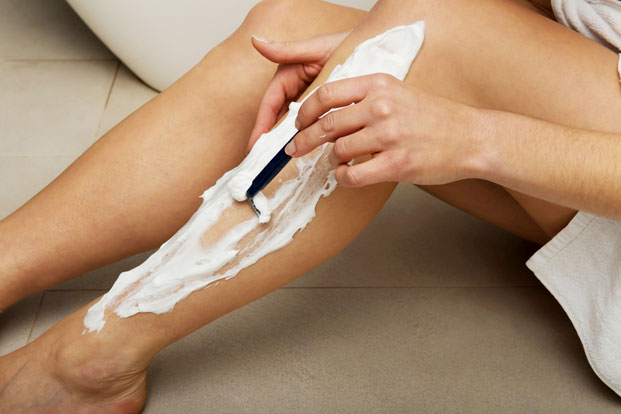As we get older, we notice rashes, bumps and spots that were never there before. As a result, we try to hide these flaws.
But in truth, skin conditions are no reason to be embarrassed. Whether it’s those brand-new age spots or a wacky wart on your foot, skin isn’t perfect. So why be ashamed?
Take a look at these seven no-so-strange skin conditions. You’ll probably find at least one thing that you struggle with on this list.
OK, warts sound gross, but lots of people have them. In fact, NHS Choices (the website for the UK’s National Health Service) says that most people will have one at some point.
Warts are little bumps that are most often found on hands and feet, but they can occur anywhere on the body — and they can be unsightly.
According to NHS Choices, warts are caused by the human papillomavirus, also known as HPV. One important thing to know is that they’re contagious. People can contract warts from skin-to-skin contact. Plus, you can spread warts from one part of your body to another.
Warts often disappear on their own, but it can take a while. As a result, many people opt for treatments to get rid of them sooner. One common method used to get rid of warts is having a dermatologist freeze them off. But both over-the-counter and prescription solutions that can be used at home are available. Some people also try to use duct tape on warts, but NHS Choices warns that this can be painful, and warts may recur.
Razor burn is an unsightly, uncomfortable — and common — condition. However, Everyday Health says that there are ways to reduce the incidence of razor burn. The first is to change razor blades often and try not to shave dry. Allow skin to be wet for a couple of minutes before shaving to soften hairs, and shave in the direction that your hair grows as opposed to against it. Also, know that multi-blade razors can increase your risk of razor burn if your skin is sensitive. Plus, moisturize often.
Have you noticed a return of that dreaded acne you got rid of years ago? According to the American Academy of Dermatology (AAD), adults can get “adult-onset acne,” which often occurs around the time of menopause. It can even occur during pregnancy.
Adult acne is usually a result of changing hormone levels. This can happen as we age or stop taking oral contraceptives. Stress also can cause acne to occur, and acne can be genetic, meaning that if family members have acne, you may too.
Certain products also can cause acne, like some skin products. To avoid this, the AAD says to use products that are non-comedogenic and don’t clog pores. Oil-free products can help those who are prone to acne. Examine your medications — some can cause acne.
Skin tags are benign growths of skin. The National Institutes of Health (NIH) say that 46 percent of people have skin tags. Nearly 60 percent will get them by age 70.
Skin tags occur when skin experiences friction. This can happen while playing sports or when clothes rub against the skin. They can be seen anywhere, but are often seen under breasts and near armpits. Genetics, pregnancy and being overweight all may contribute to developing skin tags.
A dermatologist can remove bothersome skin tags by burning, cutting or freezing them.
If you’ve had poison ivy, poison oak or poison sumac, you know just how itchy it can be. According to the AAD, the itchy rash that we get is caused by a reaction to urushiol oil.
However, rashes won’t occur immediately. In fact, you won’t see this effect for 12 to 72 hours after you’ve been exposed to urushiol oil. And contrary to popular belief, these rashes are not contagious and don’t spread to other places on the body. When a new rash develops, it’s a delayed reaction from oil to which the skin was already exposed.
Usually, these types of rashes will go away untreated. You can purchase over-the-counter products designed to help with itching in the meantime. But if you notice a reaction that affects your breathing or causes your eyes to swell shut, go the emergency room immediately.
Melasma, also known as pregnancy mask, is a common issue that affects many women. It can occur as a result of both pregnancy and birth control pills because hormones play a part in this issue. And these symptoms often subside once the baby has been delivered or using birth control pills ceases.
According to the AAD, melasma can cause areas of the face to develop brown or gray/brown patches. It most often occurs on cheeks, forehead, nose, chin and above the lip. But you may also see it on other areas of the body that have been exposed to ample amounts of sun.
The AAD says that one way to reduce melasma is to take steps to protect yourself from the sun. Wear sunscreen, and reapply every two hours. Plus, consider wearing a hat to protect your face from exposure.
One common treatment for melasma is hydroquinone. It lightens the skin, causing spots to fade. Some doctors recommend tretinoin and corticosteroids, and other choices include azelaic and kojic acid. And some patients choose to get microdermabrasion, dermabrasion or a chemical peel.
According to the National Psoriasis Foundation, psoriasis is an autoimmune disease characterized by raised, red, scaly patches on the skin. The condition usually is seen on the scalp, elbows and knees, but it can occur anywhere on the body.
Psoriasis develops when skin cells grow too fast. The cause is unknown, but it is thought to be associated with the immune system and a genetic predisposition for psoriasis. Stress, infections, medication and weather can trigger a bout of psoriasis.
Psoriasis can be treated with both over-the-counter and prescription options. Sunlight is also thought to be helpful. Smoking cessation and limiting alcohol consumption are also helpful.

Leave a Reply